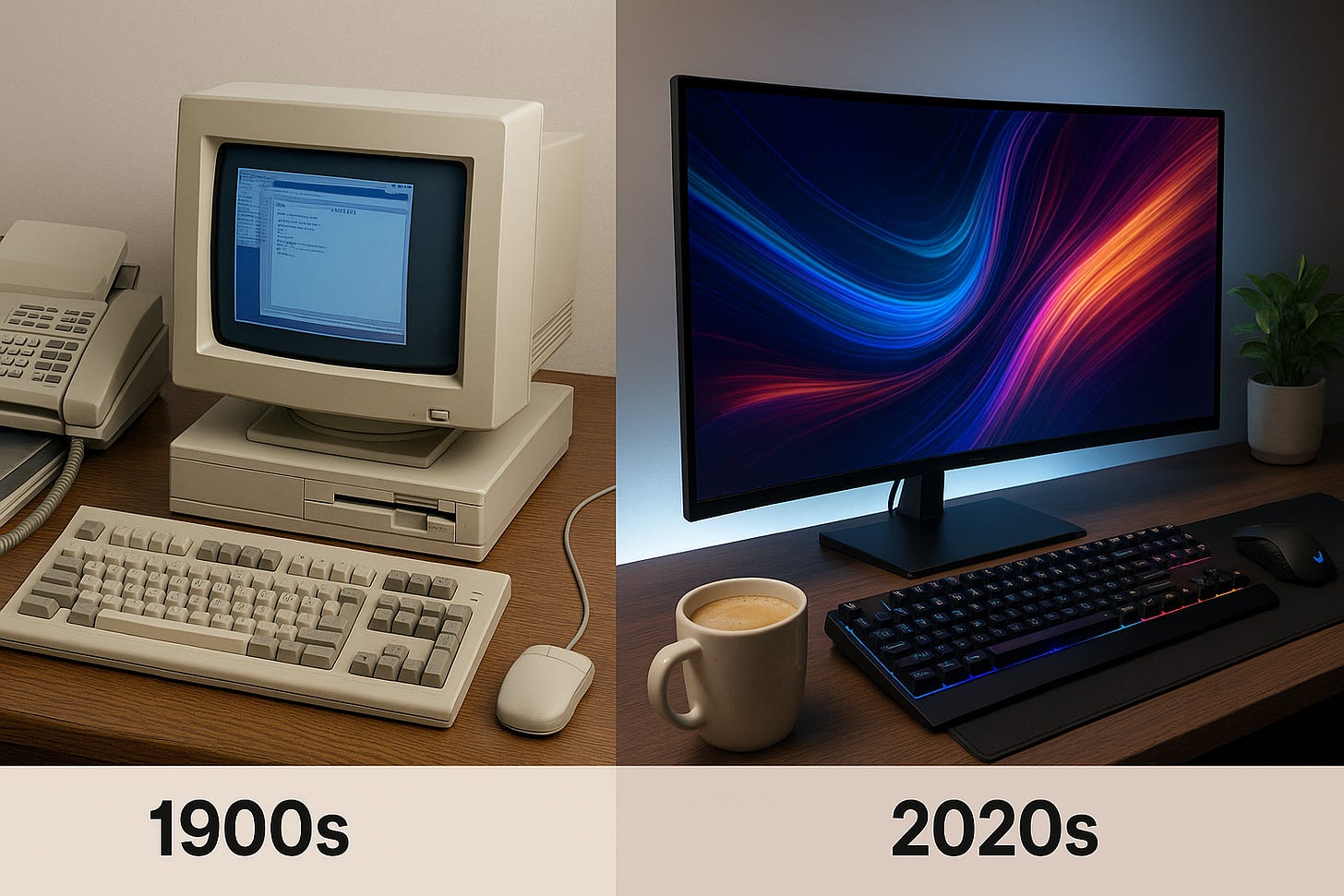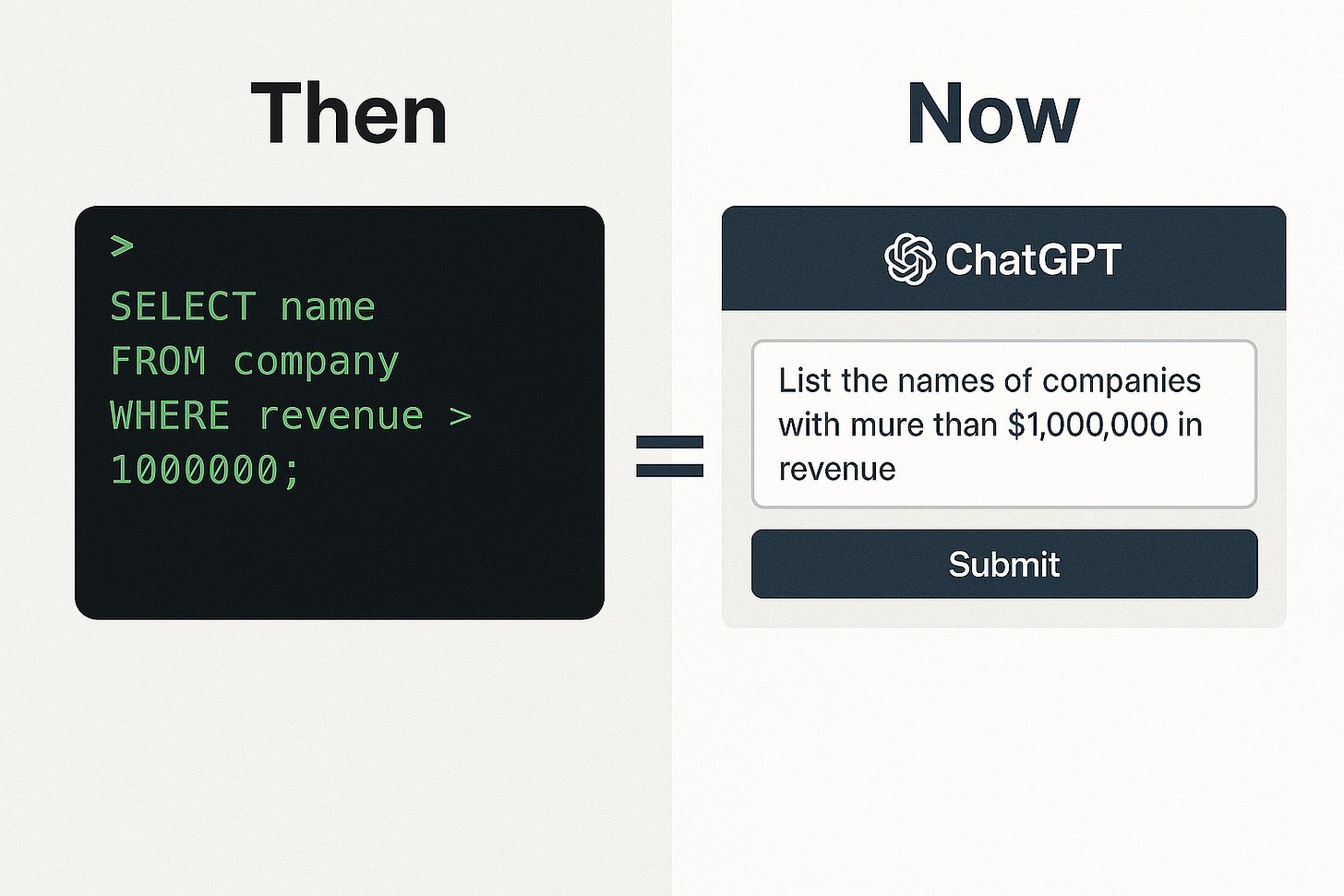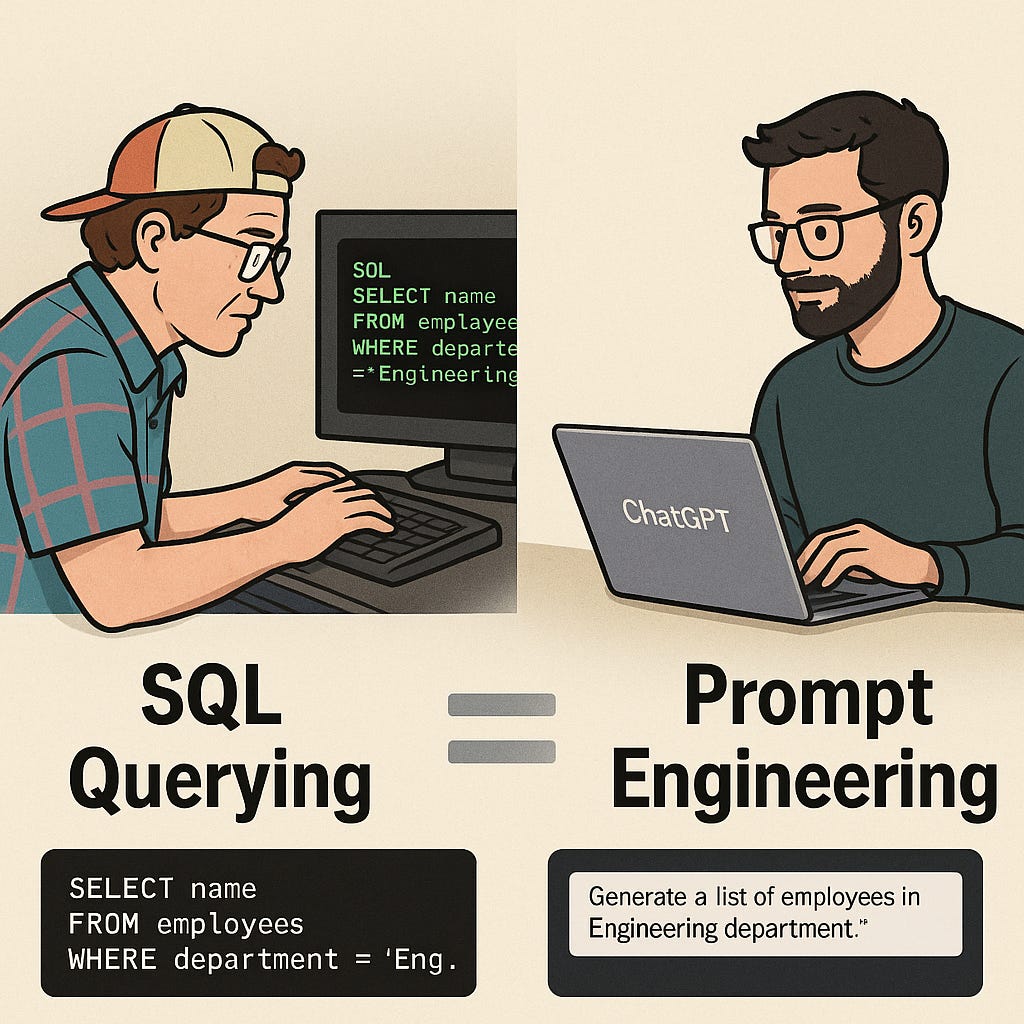This Ain’t Your First Algorithm: Why GenX Feels Déjà Vu About AI—and Why That’s a Good Thing.
From mainframes to Midjourney, how tech déjà vu is creating generational static—and what we can do about it.
Recently, I was having a discussion with my kids. We were trying to communicate but clearly, something was missing in translation. My sister-in-law hinted I should write about it. But this was not a tech topic so how was I supposed to approach it for a Substack post? Then I realized that sometimes I was having similar “moments” at work, using analogies which were falling flat. Maybe it was time for me to “update” my knowledge except my knowledge was up-to-date. I was just not using the right words. It was like the first time I played Pong, I was hooked on wanting more interactions to experiment my discovery. And yes, I turned to my own AI colleague to help me with “translating” or finding some of the new wording equivalency in my mind. So hang time, let’s take a trip down memory lane of yesterday’s tomorrow.
💾 Dial-Up Meets Discord
Let’s face it: the way we talk about technology in the workplace often sounds like we’re either pitching a sci-fi movie or selling snake oil. And nowhere is that more obvious than with AI.
Boomers, GenXers, Millennials, and GenZs are all speaking English—but we’re running wildly different firmware. The workplace has become a “Tower of Babel Fish,” with senior execs hearing “intelligence augmentation” and thinking HAL 9000, while junior staff mean ChatGPT writing Jira tickets.
But before you grab your Walkman or update your Midjourney prompt, let’s explore why generational misfires around AI and buzzwords aren’t just common—they’re expected. And, believe it or not, they might be the key to building better products and teams.
⚙️ AI ≠ New. It’s Just Wearing a Hoodie Now.
Let’s demystify a few things. The generational tension around AI mostly boils down to branding, not breakthroughs.
👴 “Back in my day, we called it predictive modeling.”
👶 “It’s literally an LLM fine-tuned with reinforcement learning, bro.”
Same soup, new bowl.
Here are some examples where old-school tech meets new-school flair:
We’ve been here before—just with a slower modem and fewer venture capitalists.
🎸 Communication Breakdown
(Cue Led Zeppelin because if you read my book, you know I like a good soundtrack)
So why does it feel so different now? Because of how we communicate around it.
GenX: Pragmatic, skeptical, spreadsheet-toting survivors of the dot-com crash. We built the internet with duct tape, coffee, and FTP.
Millennials: The Agile-native, startup-scarred generation. Fluent in Slack, side-hustles, and PowerPoint-to-Pitchdeck conversions.
GenZ: Born post-Wi-Fi. Figma-first, context-switching at 200bpm, and fluent in meme semiotics.
When GenZ says “vibe-based UX,” GenX hears “existential crisis in wireframes.”
When a Boomer exec says “We need AI,” what they often mean is “Make this dashboard predictive and stop emailing me PDFs.”
Sounds familiar?
📟 Buzzword Bloat: A Case Study in Workplace Confusion
Scenario: A cross-functional meeting.
Product: “We should deploy an LLM to reduce friction in onboarding.”
Marketing: “Can it be personalized with AI segmentation?”
Legal: “What are the model’s explainability and audit trails?”
Engineering (quietly): “So… you want a decision tree with logging?”
This is not dysfunction. This is translation.
🧠 Inline Callout:
Generational fluency is a superpower. If you can bridge buzzwords with fundamentals, you become the Rosetta Stone of strategy.
🤖 It’s Not Just AI—It’s Hype Cycle Déjà Vu
Every generation sees its “new tech messiah” come and (sometimes) go.
1980s: Expert systems and Lisp machines.
1990s: Neural networks and genetic algorithms.
2000s: Web 2.0, social graphs, AJAX!
2010s: Big data, Hadoop, deep learning.
2020s: AI agents, multimodal models, synthetic media.
Each time, the jargon updates. But the underlying goal remains: automate, augment, accelerate.
🎤 Lessons from Cross-Gen Collaboration
Here’s how to bridge the generational gap around AI (and tech in general):
Translate, don’t trivialize
GenZ: Explain prompt chaining without the sarcasm.
GenX: Don’t call LLMs “clippy with a degree.”
Pair wisdom with energy
Build cross-generational pods. Let the 20-something own the prompt stack and the 50-something sanity-check the outcomes.
Buzzword bingo = learning moment
Create a “jargon jar.” Every unexplained buzzword = $1 to the Happy Hour fund. Then explain it over drinks.
Make analogies your weapon
Comparing an AI pipeline to a well-oiled assembly line or a cocktail recipe works wonders across generations.
🎮 TL;DR - Insert Coins of Understanding
If you’ve ever felt like your Slack threads sound like:
“Let’s LLMify that ML loop with an RL layer, but keep it human-in-the-loop compliant…”
…just remember: underneath the noise is often a timeless signal.
The core truth? We’re all trying to make technology useful, understandable, and human.
So whether you learned to code with punch cards, Perl, Python notebooks, or Vibing your instincts are still valid.
Because while the tools change, the purpose doesn’t.








I’m still LMAOF after reading this twice !!! 😂
How should I translate my Sony Sports Walkman - Autoreverse of course - in current Words ? An I-Phone with tape ?